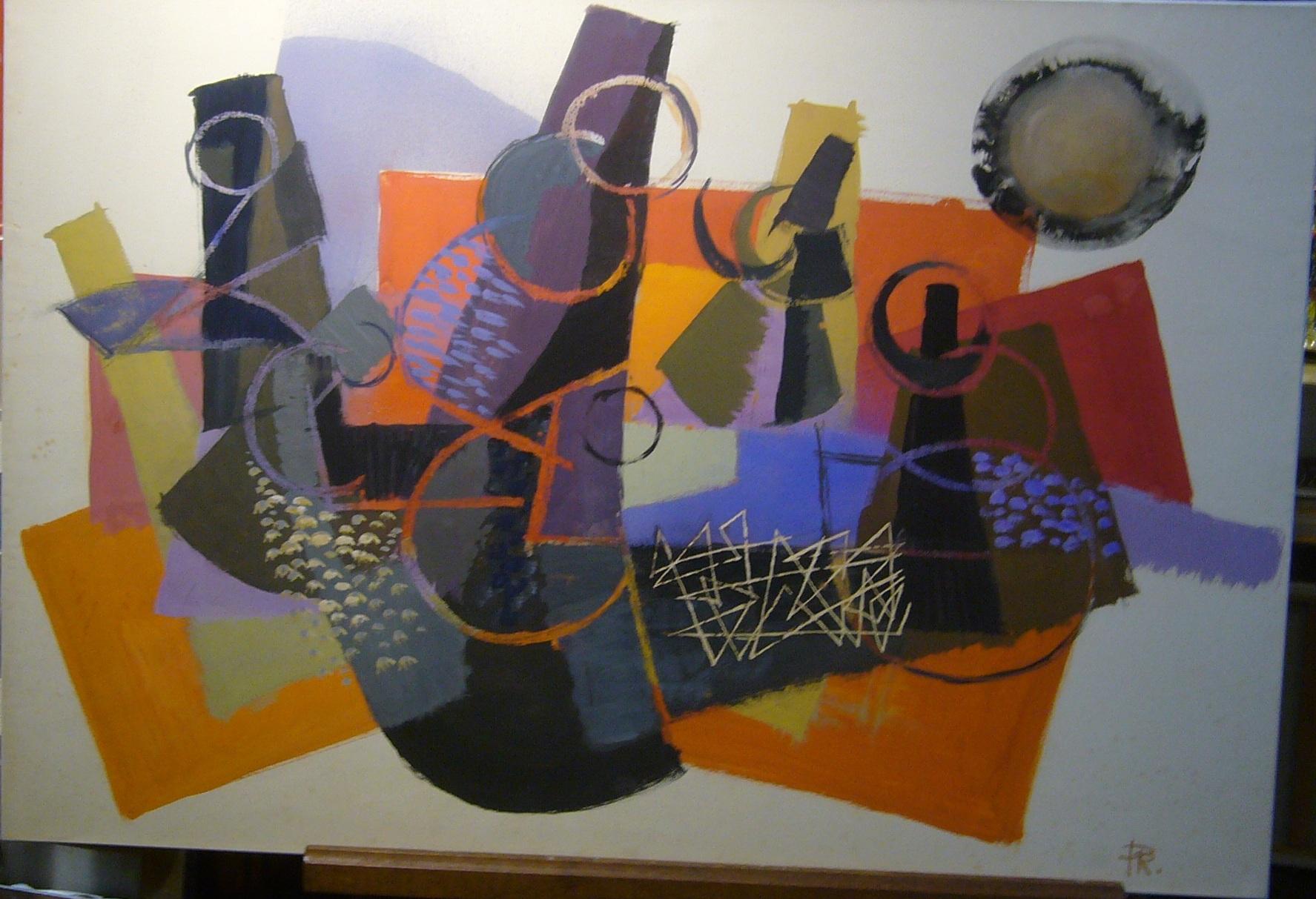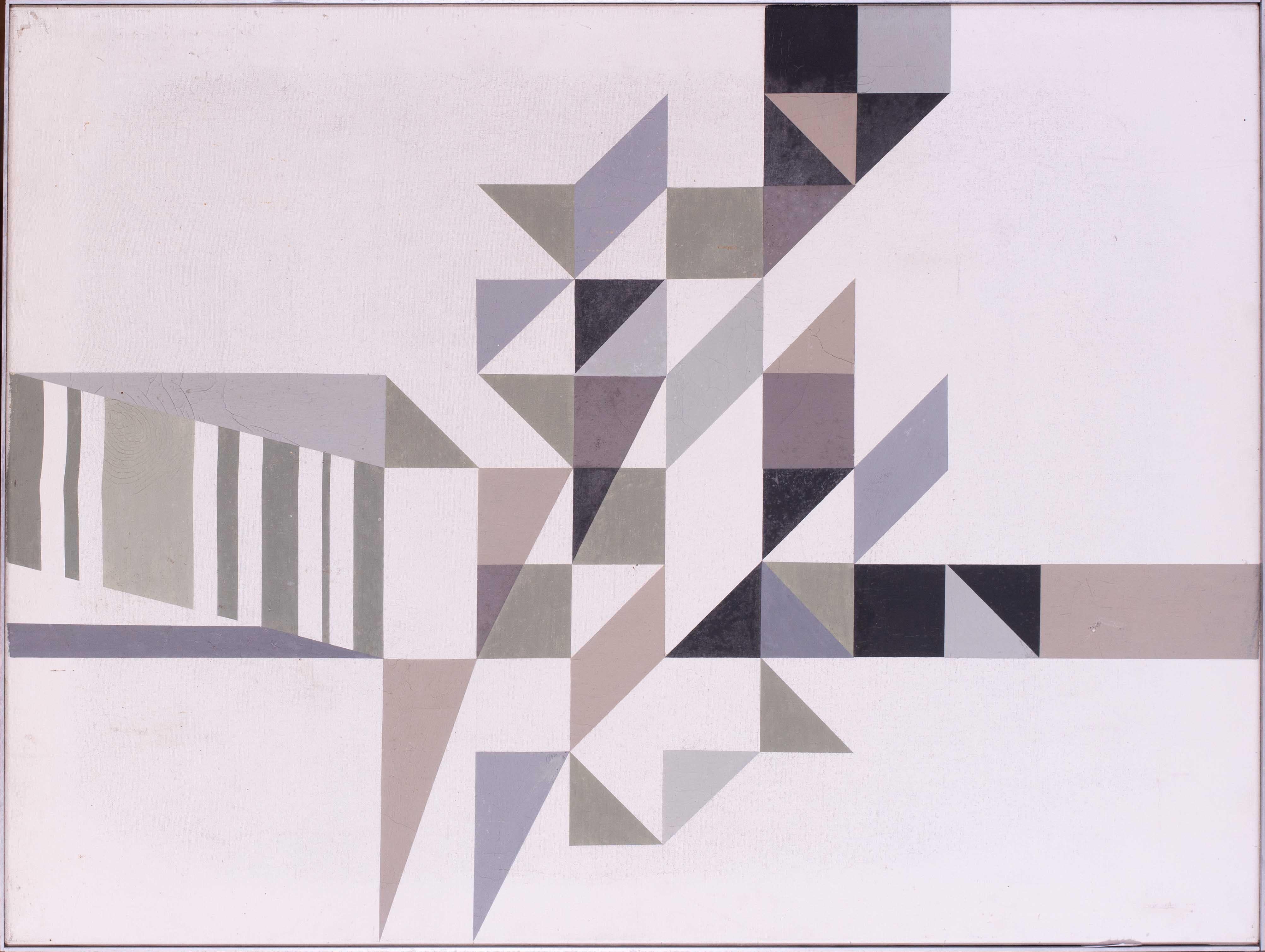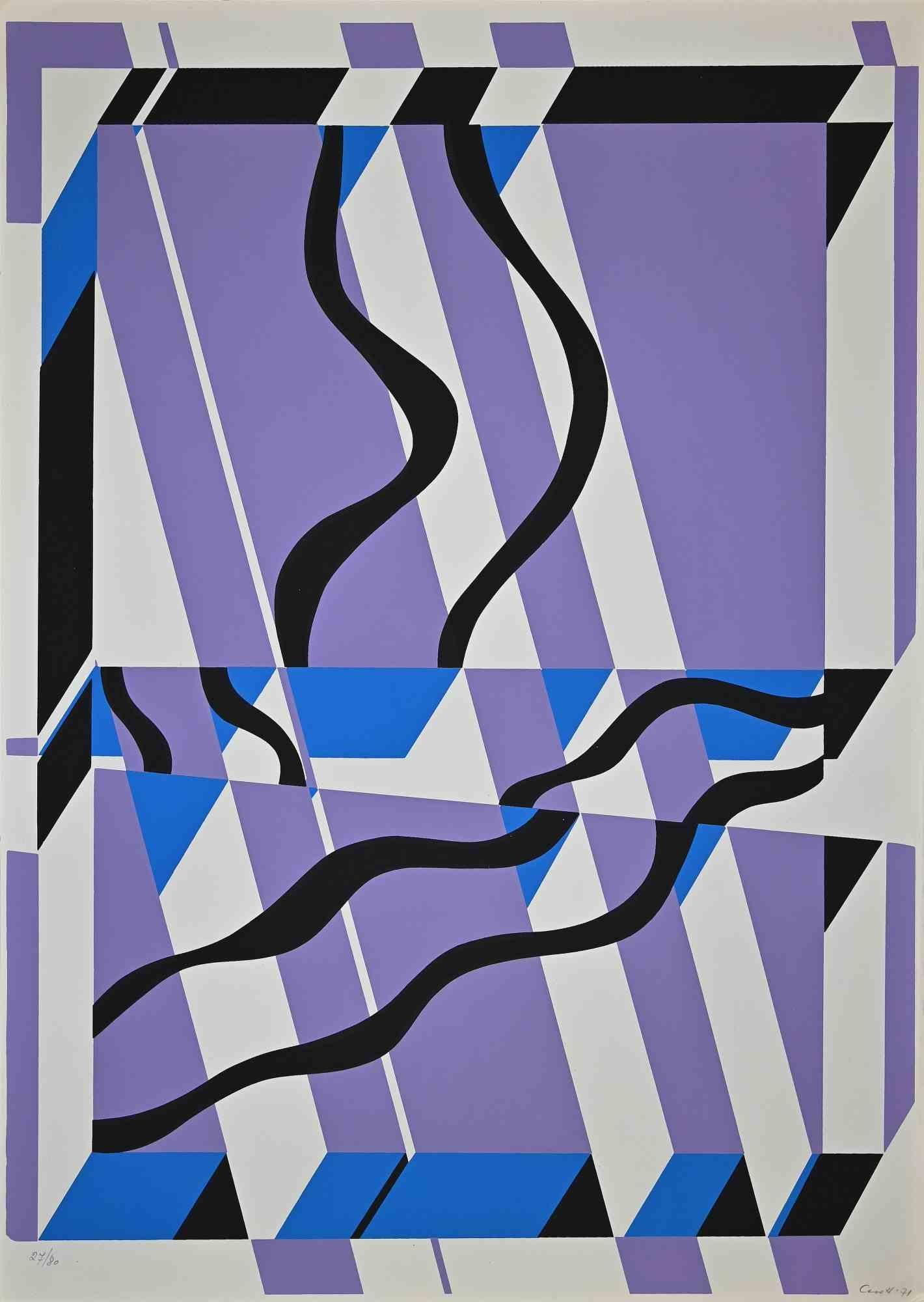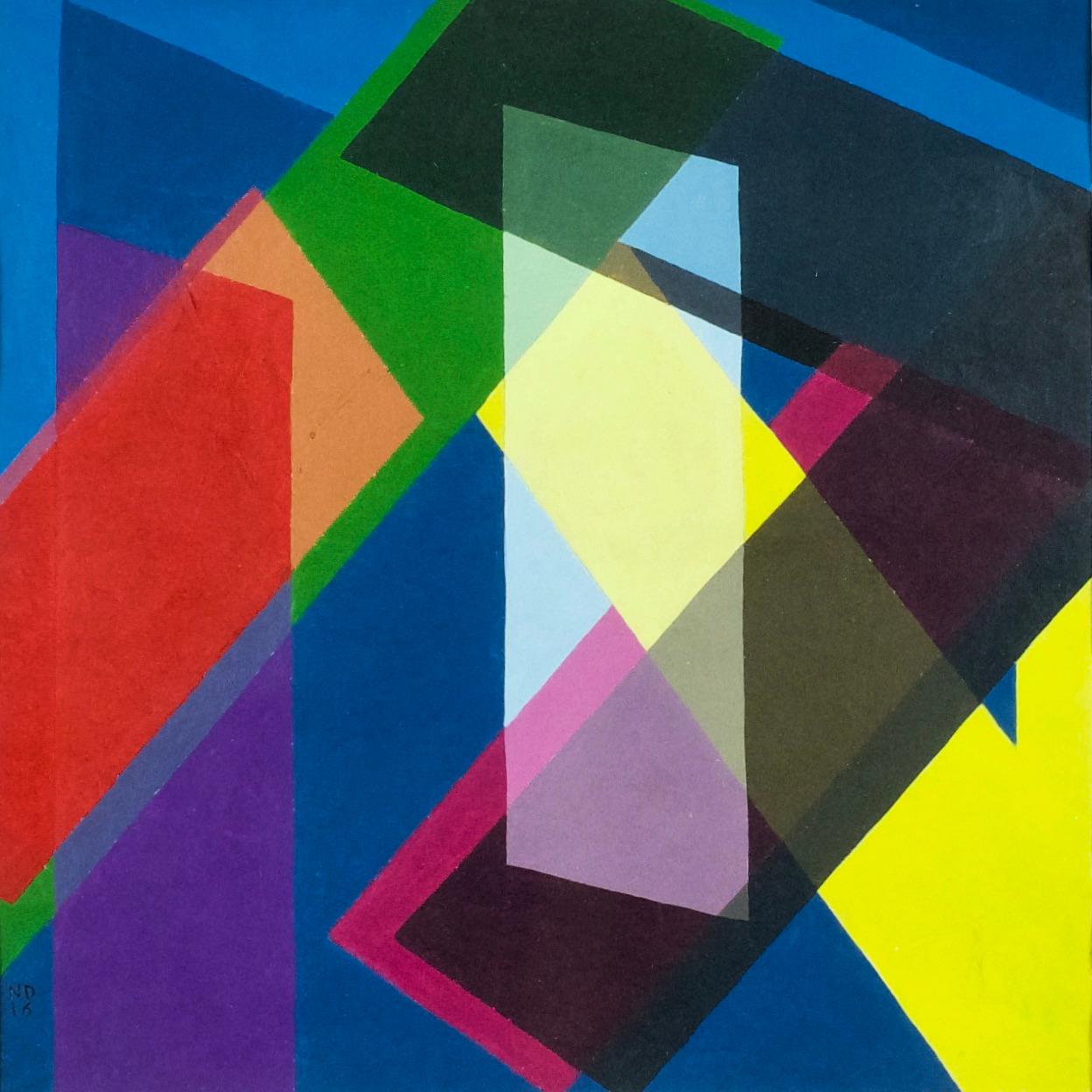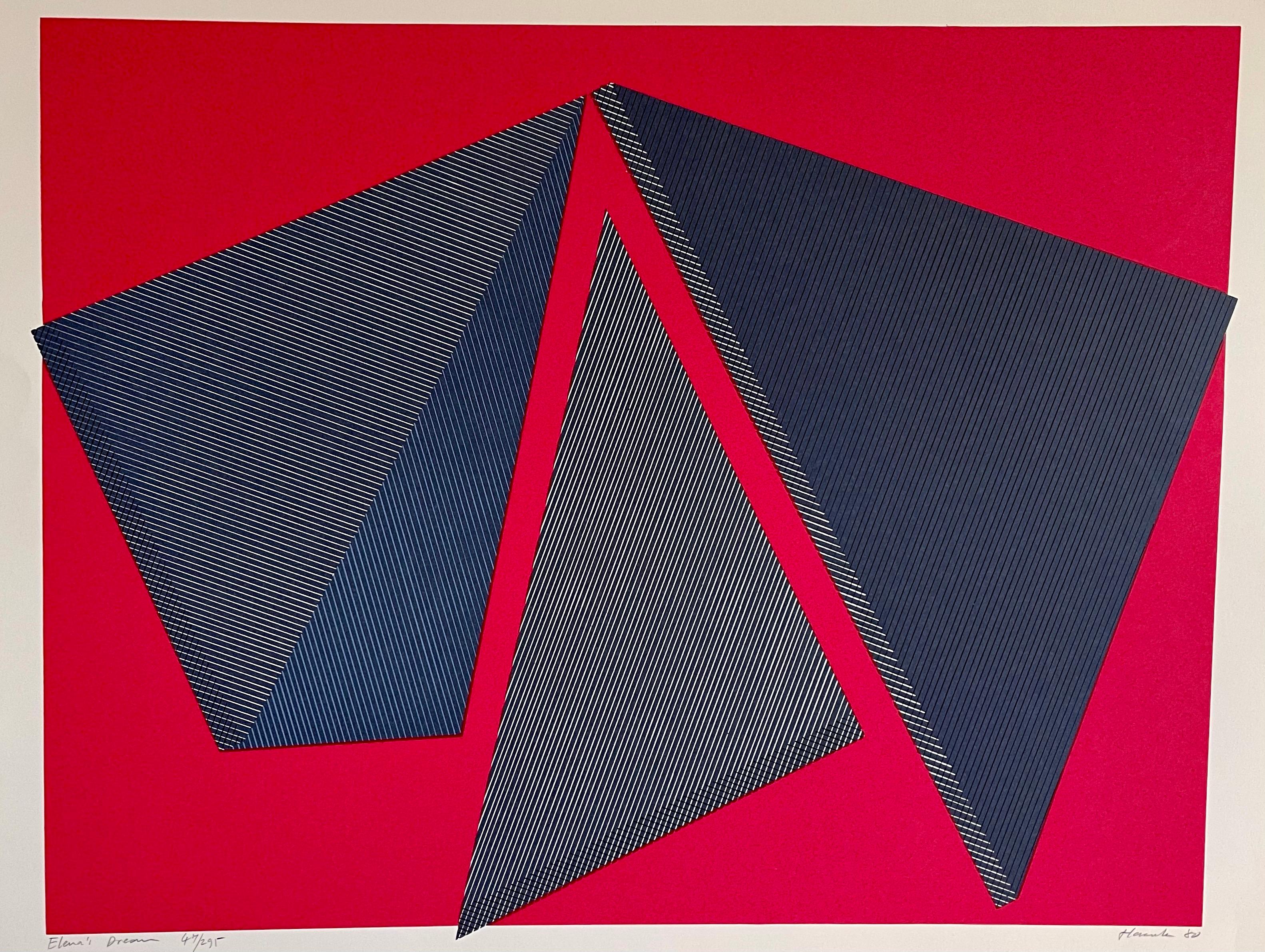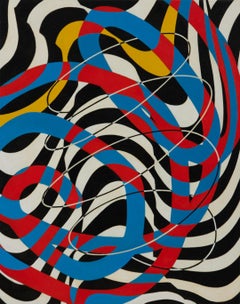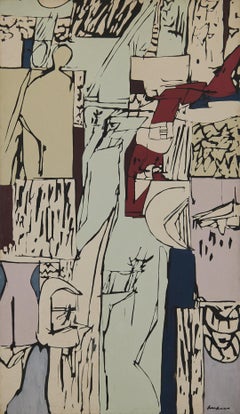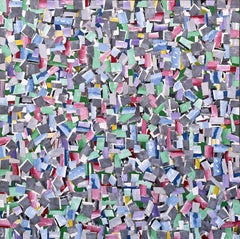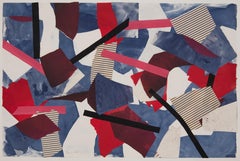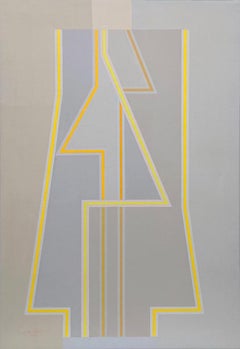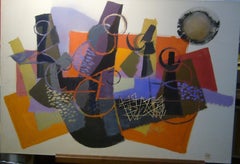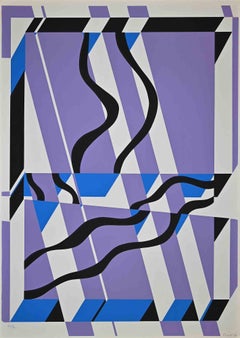Items Similar to Broken Ice, Large Mid-20th Century Gouache, Op Art Cleveland School Artist
Want more images or videos?
Request additional images or videos from the seller
1 of 10
Edwin MieczkowskiBroken Ice, Large Mid-20th Century Gouache, Op Art Cleveland School Artist1976
1976
$2,800
£2,106.74
€2,433.95
CA$3,957.13
A$4,296.67
CHF 2,275.40
MX$52,664.93
NOK 28,159.02
SEK 26,608.78
DKK 18,166.02
About the Item
Edwin Mieczkowski (American, 1929-2017)
Broken Ice, 1976
Gouache and pencil on paper
Signed, dated (Feb. 2, 1976) and titled lower right
27.5 x 37.75 inches
35 x 45 inches, framed
Edwin Mieczkowski, born in Pittsburgh, was a leader of geometric and perceptual abstraction during the latter part of the 20th century. Mieczkowski's work first came to prominence in "The Responsive Eye" exhibition, the nation's first major exhibition of perceptual art, held at the Museum of Modern Art in New York in 1965.
Mieczkowski was also featured in the 1964 article in Timemagazine that first used the term "Op Art" to describe paintings that manipulated visual cues in order to reorder and excite viewers' perceptual responses.
With a complex aesthetic that over time has transcended mere tricks of optical art, Mieczkowski has spent nearly four decades producing geometrically paintings, drawings and sculptures, a genre of modern art that is known broadly as perceptual abstraction.
His output of static and dynamic forms create a body of work, still largely intact, that uses visually disorienting, meticulously arranged lines, dazzling kaleidoscopic colors, and alluring juxtapositions of hue and tone, to playfully and seductively present new challenges for the viewer's eyes. The desired result is an optical effect of perpetual motion, harmonics and rhythm. . . .
Along with Frank Hewitt and Ernst Benkert, Mieczkowski was a co-founder in 1959 of the Anonima* group that worked together in Cleveland and New York and declared itself free from the pressures of the art market and the pursuit of personal fame. Members of Anonima often left their works unsigned and vowed to shun the usual art market venues such as commercial galleries, biennials and competitions. Instead, they engaged in a rigorous, self-imposed program of painting exercises to explore the effects of geometry and color on visual perception.
Although Mieczkowski's work hung side-by-side in the MOMA "Responsive Eye" exhibition with such colleagues as Josef Albers, Victor Vasarely, Richard Anuszkiewicz, Morris Louis, Kenneth Noland, Carlos Cruz-Diaz, Ad Reinhardt and Bridget Riley, all of whom went on to considerable fame and fortune, Mieczkowski chose to eschew commercial exhibition and career promotion. Instead, he spent 39 years teaching at the Cleveland Institute of Art and quietly executing a number of public art commissions while independently pursuing his own intuitive explorations in geometric abstraction.
Mieczkowski pursued virtually no commercial sales of his work. Consequently, the body of work he left behind consists of hundreds of paintings, drawings and sculptures only recently viewed by the public.
Throughout his entire career, which he has continued from his studio in California, Mieczkowski has done artwork in evolving styles and mediums, which actively embrace of the logic and rationality of science and technology central to the era of which he was a part. Some of his most lyrical abstractions are inspired by cutting-edge science and, in particular, biomedicine, biotechnology and genetic research. During the more expressly geometric phases of his career, he was described as having "embraced the ruler and the compass as proper and delicate tools to be employed in the name of art." . . . A testament to the notion that vision does not take place automatically as though the revealing of a scene through a window but must be inferred from visual cues, Mieczkowski's oeuvre can be thought of as a precursor of aspects of post-modernism.
In 2004, Mieczkowski's entire life's oeuvre came close to being destroyed as he lay in a hospital bed recovering from heart surgery. Mieczkowski had been in the process of planning his relocation from Cleveland to Huntington Beach, California, when he was rushed to Houston for surgery. He had already sold his studio building but had not yet removed his art; and as he lay in Houston recovering from his second aortic aneurysm, the new owners of the building scheduled it for demolition despite its being filled with Mieczkowski's life work. Friends and art patrons literally rescued the art works, removing them from the building the night before it was to be demolished.
Mieczkowski received his BFA from the Cleveland Institute of Art in 1957 and his MFA from Carnegie Mellon in 1959.
Museums with Mieczkowski's work in their collections include the Museum of Contemporary Art in Lodz, Poland; the Tel Aviv Museum of Modern Art in Israel; the Louisiana Museum of Modern Art in Denmark; the Cleveland Museum of Art; the Akron Art Museum; and the New Jersey State Museum in Trenton. His most prominent public art commissions are in the Cleveland Public Library and the Health Sciences Library of Case Western Reserve University.
About the Seller
5.0
Platinum Seller
Premium sellers with a 4.7+ rating and 24-hour response times
Established in 1975
1stDibs seller since 2022
38 sales on 1stDibs
Typical response time: <1 hour
- ShippingRetrieving quote...Shipping from: Beachwood, OH
- Return Policy
Authenticity Guarantee
In the unlikely event there’s an issue with an item’s authenticity, contact us within 1 year for a full refund. DetailsMoney-Back Guarantee
If your item is not as described, is damaged in transit, or does not arrive, contact us within 7 days for a full refund. Details24-Hour Cancellation
You have a 24-hour grace period in which to reconsider your purchase, with no questions asked.Vetted Professional Sellers
Our world-class sellers must adhere to strict standards for service and quality, maintaining the integrity of our listings.Price-Match Guarantee
If you find that a seller listed the same item for a lower price elsewhere, we’ll match it.Trusted Global Delivery
Our best-in-class carrier network provides specialized shipping options worldwide, including custom delivery.More From This Seller
View AllColorful Abstract Geometrical Late 20th Century Painting by Ohio Artist
Located in Beachwood, OH
James Massena March (American, 1953-2021)
Untitled
Oil on canvas
30 x 24 inches
"My paintings are about space, form and energy. I generally start ...
Category
Late 20th Century Abstract Abstract Paintings
Materials
Oil
Large Abstract Expressionist Mid-Century Acrylic Painting, Cleveland School
By Richard Andres
Located in Beachwood, OH
Richard Andres (American, 1927–2013)
Untitled, 1968
acrylic on canvas
signed lower right, signed and titled verso
88.5 x 50.5 inches
Has an indent and a tear in the canvas. See phot...
Category
1960s Abstract Expressionist Abstract Paintings
Materials
Acrylic
Large Pastel Abstract Collage, 20th Century New York/Texas Artist
By Joseph Glasco
Located in Beachwood, OH
Joseph Glasco (American, 1925–1996)
Untitled
1980
Acrylic and collage on canvas
Initialed and dated verso
48 x 48 inches
Joseph Glasco was born in Paul’s Valley, Oklahoma and grew u...
Category
1980s Abstract Abstract Paintings
Materials
Acrylic
Lanzorate, Large Abstract Collage, New York Artist
By Joseph Glasco
Located in Beachwood, OH
Joseph Glasco (American, 1925-1996)
Lanzorate, 1985
Monotype with fabric collage and mixed media on paper
Signed and dated lower right, 1/1, titled lower left
31.5 x 48 inches
37 x 5...
Category
1980s Abstract Mixed Media
Materials
Fabric, Paper, Monotype
Colorful abstract acrylic collage 20th century painting, New York artist
By Joseph Glasco
Located in Beachwood, OH
Joseph Glasco (American, 1925-1996)
Untitled
1978-81
Acrylic on canvas collage
initialed verso and dated ‘81
48 x 51 inches
Joseph Glasco was born in Paul’s Valley, Oklahoma and gre...
Category
1980s Abstract Expressionist Abstract Paintings
Materials
Acrylic
Monumental Blue/White/Black Geometrical Abstract Late 20th Century Painting
Located in Beachwood, OH
James Massena March (American, 1953-2021)
Untitled
Acrylic on canvas
84 x 84 inches
Provenance: From the Estate of James Massena March
"My painti...
Category
Late 20th Century Abstract Geometric Abstract Paintings
Materials
Acrylic
You May Also Like
A 1980 Pastel Abstract Geometric Painting by ID Artist Eugene Dana
Located in Chicago, IL
A 1980 pastel, Abstract Geometric painting by Institute of Design Artist Eugene Dana. Titled: Homage to Boutet de Monvel. Artwork size:
35 1/2" x 23 1/2". Framed size: 37" x 2...
Category
1980s Abstract Geometric Abstract Paintings
Materials
Canvas, Acrylic
Abstract 1, 70's - gouache on paper glued on canvas, 75x110 cm.
By Paul Rigoulet
Located in Nice, FR
gouache on paper maroufflé on canvas. not framed.
*Paul Rigoulet, peintre abstract français, né en 1924 à Samöens (Haute-Savoie). Il fait ses études à l'école nationale supérieure des Beaux-Arts de Paris, atelier Jean Souverbie...
Category
1970s Cubist Abstract Drawings and Watercolors
Materials
Gouache
Abstract No.1 by Mid Century British artist John Hambleton Holdcroft, geometric
Located in Petworth, West Sussex
John Hambleton Holdcroft (British, 1926 – 2014)
Abstract No.1
Signed on the reverse
30 x 40 in. (76.2 x 101.7 cm.)
During his time at art college John Hamilton Holdcroft was preside...
Category
20th Century Abstract Geometric Abstract Paintings
Materials
Canvas, Oil
Abstract Composition - Screen Print by Uberto Maria Casotti - 1971
Located in Roma, IT
Violet Composition is a screen print realized by Umberto Maria Casotti in 1971.
Hand-signed and dated on the lower right. Numbered on the lower left. Edition of 27/80 prints
The s...
Category
1970s Abstract Abstract Prints
Materials
Screen
Abstract painting on paper - Nicolas Dubreuille - Geometric, Contemporary
By Nicolas Dubreuille
Located in Paris, France
Colorful abstraction by Nicolas Dubreuille : "Ref 364"
Nicolas Dubreuille is a multi-faceted abstract artist who likes to multiply mediums - sculpture, painting, drawing, photograph...
Category
2010s Abstract Geometric Abstract Paintings
Materials
Acrylic
Jean Marie Haessle Abstract Geometric Op Art Silkscreen Lithograph Print
By Jean-Marie Haessle
Located in Surfside, FL
Jean Marie Haessle, French-American (1939-)
Serigraph silkscreen
Hand signed in pencil and numbered
Elana's Dream (red background)
1980
Jean Marie Haessle was born in 1939 in Alsa...
Category
1980s Abstract Geometric Abstract Prints
Materials
Lithograph, Screen

